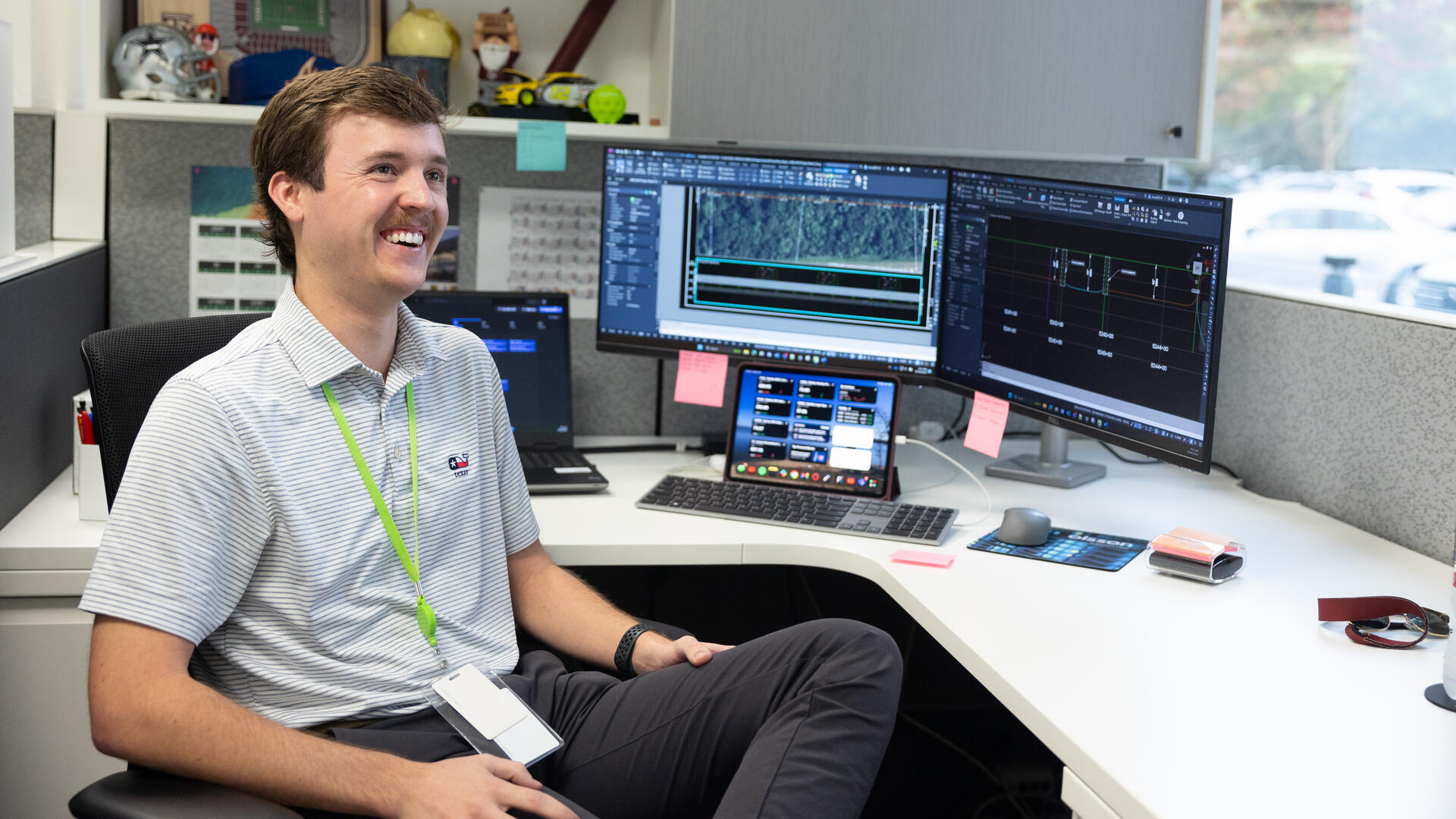The 275-foot-tall Iowa State Capitol has stood proud in Des Moines, Iowa, since 1886. The historic building needed extensive improvements to preserve its structural strength. Our surveyors were armed with the necessary skills and equipment needed to get the job done.
Even if that meant using a fixed 60-foot-tall ladder to ascend the dome structure; that task fell to Olsson associate technician Kevin Winslow. He was committed to delivering precise data to our client, OPN Architects. The architecture firm recruited Olsson’s expertise to secure needed data to restore the Iowa State Capitol and its iconic domes.
“We needed to get a good high-quality scan to accurately build a digital model, so we reached out to Olsson,”
“We needed to get a good high-quality scan to accurately build a digital model, so we reached out to Olsson,” said James Peters, who’s worked at OPN Architects for 10 years. “Your scanners could get the high level of detail we needed for the interior and exterior parts of the dome.”
Kevin used the ladder in the lower dome structure to access the narrow and rarely seen space in one of the upper domes. He used advanced 3D scanning technology to gather precise dimensions of the complex structure. Cutting-edge technology was necessary to maintain the cherished, historic building.
We used unmanned aerial vehicles (UAV) with lidar capabilities and 3D scanning to scan the building’s iconic domes. Lidar is an acronym for “light detection and ranging” and uses light waves instead of radio waves to emit non-visible laser pulses. Once reflected from the target object, it generates highly accurate range measurements – within a couple of hundredths of a foot – on hard surface features millions of times per second.
Combining lidar scanners with UAV technology gives Olsson surveyors the unique ability to access hard-to-reach areas such as difficult terrains and rooftops – like the capitol’s domes. We are one of the few engineering firms in the Midwest that could provide this level of service.
Together, the scans created one highly accurate point cloud of the dome and Capitol campus. Point clouds are collections of the millions of data points gathered by the scanners. Our surveyors use point clouds to produce detailed and accurate representations of a surveyed area.
Kevin said the amount of data surveyors process now is sometimes difficult to understand.
“I tell people to imagine the data in four or five iPhones,” Kevin said. “That’s about how much data, if not more, we gather and process with our equipment for one project.”
Our specialization with state-of-the-art technology was vital when gathering data of the dome’s complex and unique structure. Once collected, we needed high-powered software and hardware to process the vast amount of data.
We found a solution to simultaneously analyze complex scans and lidar data by working directly with Dell engineers. The solution allows us to run UAV photo processing and point cloud processing software at maximum capacity. This greatly reduces production time and increases the number and magnitude of projects we can work on.
“Because Olsson has this kind of technology, we deliver very accurate, safe, and cost-saving results,” said Des Moines Survey leader Jon Pittmann. “This in turn helps our engineers and clients design and construct more efficiently.”
Olsson’s clients, like OPN Architects, can use point clouds to generate accurate 3D models of environments, piping networks, HVAC systems, and structures for new builds, additions, repairs, or retrofit projects. Our data was used to evaluate the structural integrity of the Iowa State Capitol dome and pinpoint restoration areas.
"We deliver very accurate, safe, and cost-saving results."
James, from OPN Architects, said the 100-year-old architectural drawings of the Iowa State Capitol domes had no measurements and were previously drawn by scaling photographs, which led to incorrect dome shapes.
“This was really important to get accurate drawings that express certain materials and square footage,” James said. “With Olsson’s data, there is less unknown, and we have a better chance of accurate pricing in the construction phase.”
It was our priority to keep our employees and the community safe while providing engineering services during the COVID-19 pandemic. A pandemic that directly impacted Jon, our project manager, on the eve of the Capitol project, placing him on the sidelines and searching for last-minute substitutions.
Kevin stepped up to the challenge and worked with Bob Hughes, a local survey equipment vendor from Precision Midwest in Des Moines. We used our Leica P50 3D scanner for the perimeter of the building at ground level and Precision Midwest’s Trimble X7 scanner for the rooftop and interior of the small southeast dome. Finally, we flew our UAV MicroDrone mdlidar300 to scan the entire building and property.
"It was very cool to see people rally together and get the job done in just one day."
Following strict safety protocols and a detailed work plan, our team completed the project – on budget and on time.
“It was very cool to see people rally together and get the job done in just one day,” Jon said.
Our investment in advanced equipment and software is important to provide accurate and successful survey services for complex projects like this one.
“Olsson is very interested in staying at the forefront of technology by investing in the latest software and hardware,” Jon said. “This has allowed us to work with much larger data sets and helps Olsson lead the way in 3D scanning and UAV lidar services.”
This technology helps us provide clients with incredible and precise results, in turn allowing us to better serve, grow, and improve the communities we serve.
We are happy to use advanced technology to help preserve a historic landmark that represents strength and unity to many.
The Iowa State Capitol improvements are expected to be completed in 2023.

































.avif)





































.avif)
























